SPURS Webinars
|
||||
Click on the images for a closer view! |
 Ocean Thinking: Inside and Outside of the Box
Ocean Thinking: Inside and Outside of the Box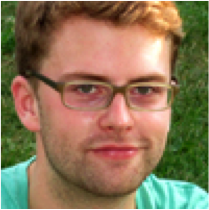 |
Presented by Julius Busecke - September 17, 2013
It may be easy to think about studying the ocean by looking at a small section of it, but the reality is that water is constantly on the move. While highlighting his own research within the SPURS area, Julius will demonstrate how the atmosphere affects the water cycle both on land and in the ocean, and how the movement of seawater plays a crucial role in our understanding global ocean circulation.Julius Busecke is a Graduate Research Assistant at Lamont-Doherty Earth Observatory, Columbia University. He received his B.Sc. from the University of Kiel, Germany in 2010.
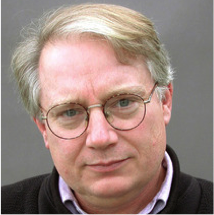 |
Presented by Stephen Riser - September 24, 2013
The atmosphere is not the only thing that affects the ever-changing ocean. Using in-water measurement tools such as profiling floats, as well as satellite data from SMOS and Aquarius instruments during the SPURS mission cruises, Dr. Riser has examined salinity changes in the SPURS area from the surface of the water to the depths of the ocean. Ultimately, Dr. Riser is seeking to investigate long term changes – by using a combination of observations from above and below.Dr. Stephen Riser is a Professor in the School of Oceanography at the University of Washington. His primary interests are in the ocean's role in climate, and in deducing the general circulation of the ocean and ocean/atmosphere/ice interactions through direct observations of the ocean circulation. He is also increasingly thinking about the interactions between physical aspects of the ocean circulation and biogeochemical properties of the ocean.
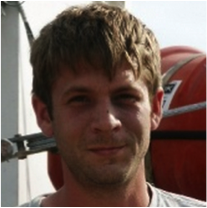 |
Presented by Tom Farrar - October 1, 2013
Determining ocean salinity trends is not a simple task. With differences in the amount of water, heat, and salt constantly coming and going, as well as gradients across depth and latitude, it’s a challenging task to undertake. Dr. Farrar will share what data from a fixed mooring within the SPURS area can tell us about the overall "salt budget" for one of the saltiest parts of the world’s ocean.Dr. Tom Farrar is an Associate Scientist at Woods Hole Oceanographic Institution. His research interests include air-sea interaction and exchange; dynamics and thermodynamics of the upper ocean; tropical dynamics and equatorial waves; oceanic internal waves and eddies; satellite oceanography; and ocean observing and instrumentation. These interests are pursued from an observational perspective using in situ observations, satellite observations, and, in some cases, laboratory and numerical models to test hypotheses and test or formulate simplified physical models that aid understanding.
 Seeking Salt: Measuring a Key Ingredient of Climate
Seeking Salt: Measuring a Key Ingredient of ClimateArchives of the first three-part webinar series (below) are available to watch. This series focused on how SPURS scientists are seeking to better understand ocean salinity, which affects everything from the water cycle to climate change. Each webinar features an interactive concept map loaded with educational resources that can serve as a starting point for educators to begin to "sprinkle" ocean salinity content into your teaching. Each webinar is also paired with applicable Next Generation Science Standards for easy integration.
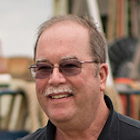 |
Presented by Dr. Eric Lindstrom – February 26, 2013
What is a sensor web, and how does it help SPURS? Dr. Lindstrom takes us on a trip through salinity research, revealing how ocean exploration has evolved over time and the combination of approaches we're now using to to investigate what's happening in the unique "ocean desert" of the North Atlantic.Dr. Eric Lindstrom is a Program Scientist in the Science Mission Directorate at NASA Headquarters in Washington D.C. He has degrees in Earth and Planetary Sciences from Massachusetts Institute of Technology (1977) and Physical Oceanography from the University of Washington (1983). His scientific interests include circulation of the ocean and air-sea exchange processes. Read more about Eric here.
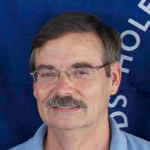 |
Presented by Dr. Raymond Schmitt – March 5, 2013
What affects ocean salinity, and why should we care? The saltiness of the ocean is controlled by the water cycle. And the temperature and salinity of ocean water together control ocean density - the crucial driver of ocean circulation. Dr. Schmitt explains how ocean circulation works and its profound impacts on the climate.SPURS Chief Scientist Dr. Raymond Schmitt is a Senior Scientist at Woods Hole Oceanographic Institution. Dr. Schmitt earned his Ph.D. in physical oceanography from the University of Rhode Island and his B.S. in physics from Carnegie Mellon University. His research interests include oceanic mixing processes such as "salt fingers" and the oceanic freshwater cycle. He has been a J.S. Guggenheim fellow and is a Fellow of the American Geophysical Union. Read more about Ray here.
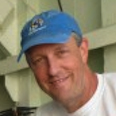 |
Presented by Dr. Fred Bingham – March 12, 2013
What have we learned about the SPURS site and what's next? The interdisciplinary cruise undertaken by SPURS scientists involved the coordination of an armada of technology - from in-water instruments to shipboard measurements to satellites in orbit around Earth. Dr. Bingham shows us the results of the team's research, including real data collected during the cruise.Dr. Fred Bingham is a Professor in the Department of Physics and Physical Oceanography at the University of North Carolina at Wilmington. His research interests include global distributions of sea surface salinity and large scale regional physical oceanography - the Kuroshio, the western North and Equatorial Pacific, and Onslow Bay, North Carolina.

